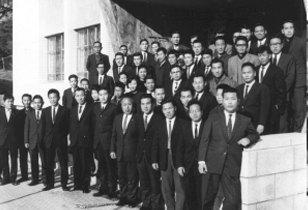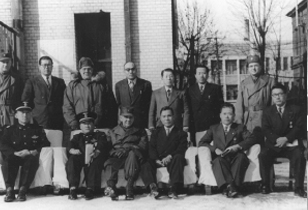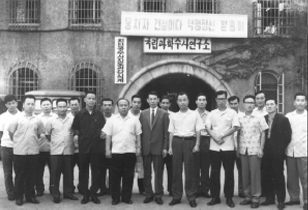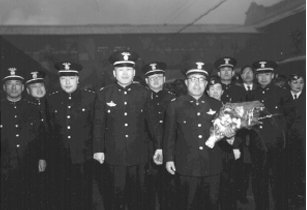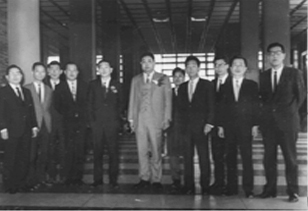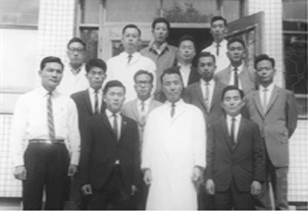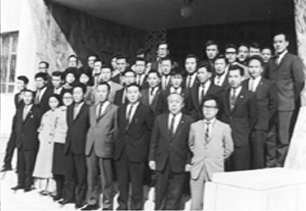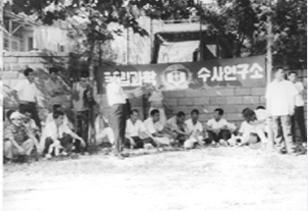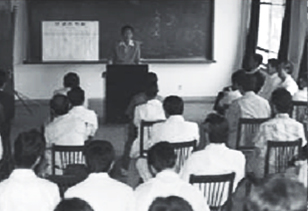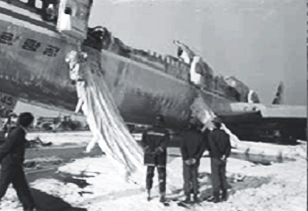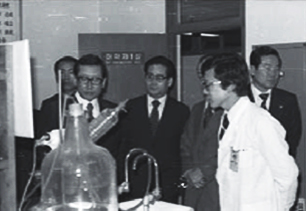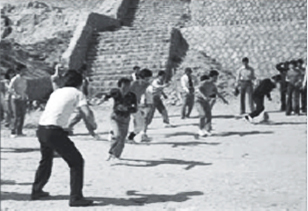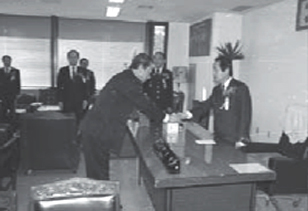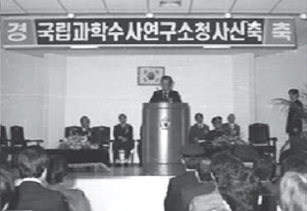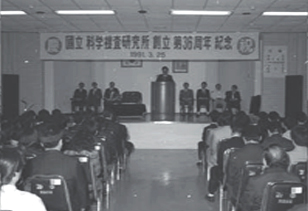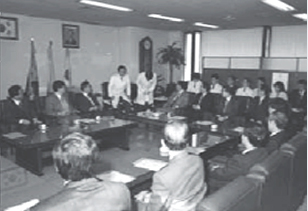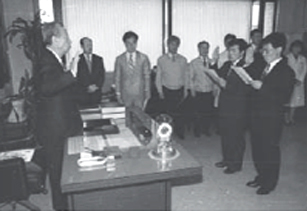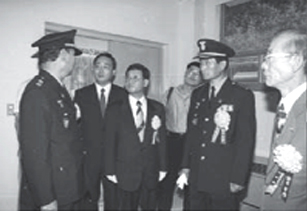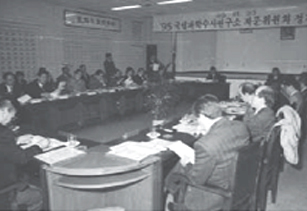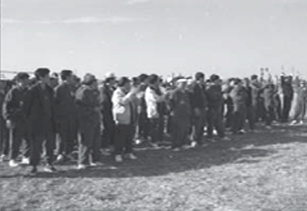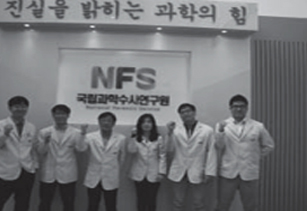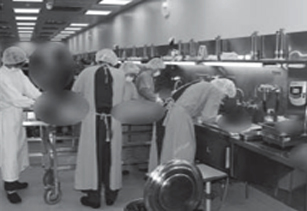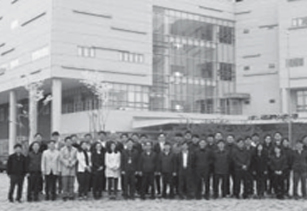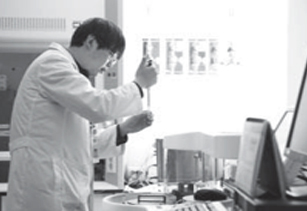NFS History
After the Korean War, different kinds of crimes emerged within a society entailed in confusion and angst, and the scientification and specialization of investigations for resolving the cases were urgently needed more than ever. In order to enable the institute to become separated from the criminal investigation agency and be able to only engage in analysis work without being influenced by any circumstantial factors, the NFS was launched as an institute carrying out analysis and research work independently under the Ministry of Home Affairs on March 25, 1955. In addition, the institute has set up a comprehensive research system on scientific investigations, including forensic medical and forensic scientific analysis and research on criminal investigations and judicial proceedings. Moreover, the NFS became responsible for scientific research and analysis required for criminal investigations through the requests of government agencies and public officials, and all analysis tasks except for fingerprinting-related tasks among tasks of the forensic analysis department of Security Bureau were transferred to the NFS.
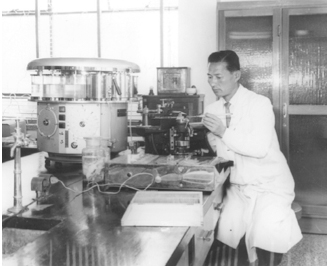 Photo of Research Activity Taken During Early Period of NFS
Photo of Research Activity Taken During Early Period of NFS
The number of analyses increased dramatically right from the beginning of the establishment of our institute, from 480 cases in 1955 and 771 cases in 1956, leaping to 2,129 cases in 1962. During this period, when an operating surgeon prepared a draft for the analysis report, and another employee wrote out a copy or typed the report. In particular, from 1955, analysis tasks were actively conducted focusing on paternity testing, anatomical appearance test, and ABO blood type test. Since 1958, it has been possible to fill out the analysis report form by typing similarly to the present report, so that the autopsy operating surgeon directly wrote the result and the assistant wrote out a copy when sending it. Especially, at this time, since firearms had not yet been collected after the war was over, civilian murder cases by a gun occurred frequently, and analysis tasks associated with it were increasing.
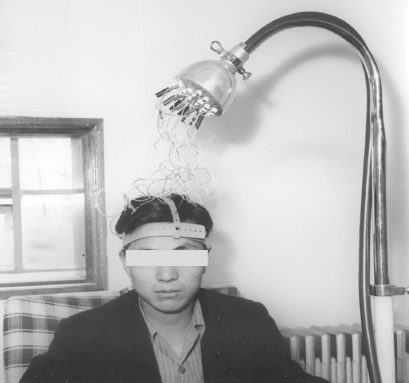 Research Activity of Earliest Period
Research Activity of Earliest Period
Autopsy reports, which used to be treated as class 3 confidential documents became first-class document since 1961. In 1961, military regime came into power through the 5·16 coup, and starting in 1962, autopsy-related tasks were performed after reporting to the Central Intelligence Agency. During this period, food poisoning cases, poisoning cases, poisoning accidents caused by toxic compounds during food manufacturing were commonly occurring, and mishaps caused by the medical practices of unlicensed doctors occurred. This was a period plagued with extreme poverty taking its toll on society leading to murders and suicides caused by the hardships of life.
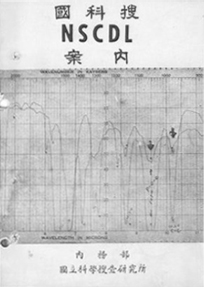 The Introduction of NSCDL, 1963
The Introduction of NSCDL, 1963
In order to boost employees’ morale and instill positive views, our institute has set up a principles of honesty, accuracy, fairness and speedy processing and prepared work guidelines for employees. In addition, we also prepared many kinds of report forms and published guidebooks and annual reports/booklets to promote the institute and analysis service status both internally and externally, thereby paving the way for cooperation and exchanges with all the government research institutes in an equivalent position.
In the 1960s and 1970s, scientific investigations have been steadily developed thanks largely in part to the steady development of our institute’s analysis services including forensic medical analysis and the introduction of the latest analysis techniques influenced by the other fields of science. Efforts to promote prompt and accurate analysis such as the introduction of the latest analysis equipment and overseas training to acquire advanced analysis skills have been steadily developed, and awareness of scientific investigations by the general society and investigation-related persons has also improved, leading to increased cases of utilizing forensic analysis. During this period, our institute has tried to establish a foundation as an international-level analysis institute despite unfavorable conditions and scanty environment we endured at the beginning. As a way to cope with increasing analysis demands that include analysis research and development projects, we underwent a minor reorganization.
The autopsy team did not have an autopsy room in the new Cheongundong government office, so the autopsy team had to go to the crime scene or the corpse room directly for an autopsy or postmortem inspection. From 1968, autopsy work could be regularized at the autopsy room of the institute. During this period, the majority of the requested analysis cases were murder cases and deaths arising from malpractice, and only few of the deaths was the result of disease (natural deaths), deaths by poisoning or fire. In the case of traumas, the wound area was directly drawn into a black and white photograph in the analysis form to make it easily recognizable. In the case of rapes, when the sperm was discovered on microscope, a camera was attached to the microscope, and the photograph taken with it was attached in the analysis form. Additionally, if it was suspected that a death was caused by poisoning based on the autopsy findings, examination on poisoning was referred to the chemistry division, and the cause of death by type was determined according to the test results. Adulterated food-related incidents were analyzed in cooperation with the National Institute of Chemistry and the National Institute of Health.
In 1965, the institute successfully detected methadone using thin-layer chromatography (TLC), a new test method applied for the first time in Korea. Thin-layer chromatography is able to obtain more accurate results in a much shorter time than paper chromatography. This research gained considerable response from academia at that time, and became an opportunity to utilize the method as academic research data in our institute as well as related academia. From 1964, the number of cases of analysis for cyanide poisoning gradually increased, and because of the continuing rise it was a leading cause of death since the 1970s. In the late 1960s, there were many cases of analysis for addiction to arsenic and barbituric acid.
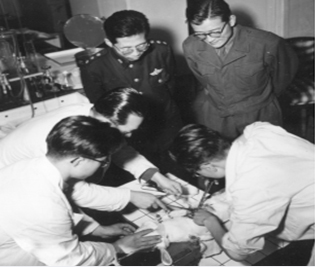 Animal Anatomy Test
Animal Anatomy Test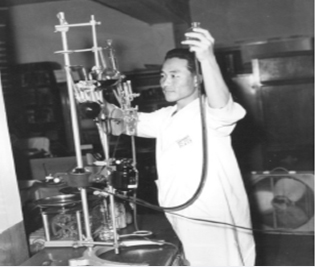 Chemistry Test
Chemistry Test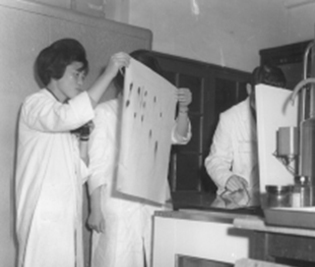 Thin-layer Chromatography (TLC)
Thin-layer Chromatography (TLC)
In the late 1960s, the Korean government allowed individuals to own hunting guns, which resulted in many shooting deaths. In addition,
as the era of birth control dawned, illegal abortions were performed resulting in many deaths. From this point, autopsy doctors began
to report the result to the director of the institute in written format first after the autopsy was completed using an official form,
and a summary of the case was written in addition to the 'Autopsy Request' for the requesting police officer.
In addition, the institute tried to colorize the autopsy photos by preparing a color photograph development system in the criminal photograph
room. It was in 1968 that our institute began forensic dentistry analysis service in earnest. The institute decisively pinpointed criminals
by making a tooth plaster model with a suspect’s teeth after inspecting teeth marks impressed on the outer skin of a dead body and performing
a comparison. The analysis for the trace of teeth marks requires highly skilled techniques and close cooperation with detectives.
In the 1960s, fire investigations and counterfeit bill appraisal were on the rise, but it declined again in 1966. In the early 1960s,
there were many document appraisal requests due to distrust among people, which fell sharply in the late 1960s.
Our institute has been making a great deal of effort to grow and develop as an analysis institute. Particularly, since 1975, we have had keen interest in pursing quality as an analysis agency while actively coping with reality, and have studied and developed various problems related to scientific investigations. As the kinds of examinations for various criminal evidence increased over the years, and the analysis area became wider, our organization and personnel reorganized accordingly and our facilities and equipment were expanded. As a result, our institute has prepared the groundwork to continuously grow and develop as the only professional analysis agency in South Korea.
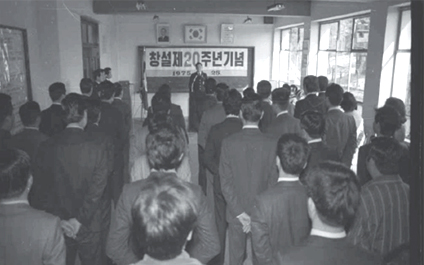 March 25, 1975. 20th Anniversary Ceremony
March 25, 1975. 20th Anniversary Ceremony
During this period, delays in analysis service due to the transfer of analysis equipment was the biggest problem, which caused complaints by police on the front lines. Even the Uijuro office did not have an autopsy room, so autopsies were performed at a morgue. Since the mid-1970s, analysis services have greatly improved despite a rapid increase of the number of analysis tasks due to the introduction of vast amounts of foreign equipment and overseas training and cultivation of professional skills of research agents.
In 1978, the serology lab was changed into biology lab 1 and biology lab 2. Biology lab 1 was responsible for examination of hair,
human body secretion, and illicit herbal medicine, while biology lab 2 was responsible for examination of bloodstains, species identification,
and gender identification. This was in response to the increased tasks and rapidly changing trend of the administrative environment and
surrounding conditions as the method of detecting protein genetic enzymes such as erythrocyte enzymes was developed, moving away from
analysis that entirely depended on blood types. The major analysis research performed during this period included research on the morphological
characteristics of hair and the distribution of 'MN' blood type in Koreans, and a study on the aggregates of Korean plants was also published.
In addition, since 1979, new equipment had been introduced in accordance with the modernized scientific investigation equipment supply plan,
and forensic and serological analysis and overall re-review were performed using the equipment.
In 1980, the institute began conducting lie detection (polygraph) tasks in earnest. The reason that lie detection emerged in Korea attracting
the attention of the public stemmed from the abduction case of Lee that occurred in the jurisdiction of the Mapo Police Station in 1981.
The result of a lie detection test, which is considered to be a symbol of scientific investigation, is useful in judging the authenticity
of a statement and inducing a confession in the process of an investigation.
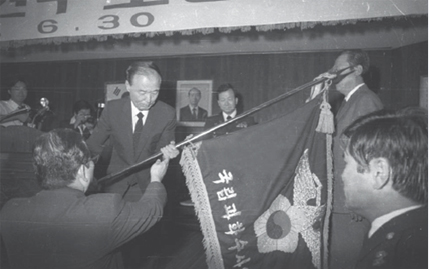 June 30, 1984. Relocation Ceremony
June 30, 1984. Relocation Ceremony
In 1981, scientization and the reliability of analysis services have been ensured by the introduction of comparative test analysis equipment. In 1984, to further broaden and specialize forensic dentistry analysis, contract research projects were carried out to examine morphological changes in teeth in cases of poisoning. In addition, to improve the foundation of scientific analysis and develop new analysis techniques, the institute secured 17 of the latest analysis equipment including a superimposing machine, automatic film developing machine, ion chromatography, and gas chromatography costing a total of 0.45 billon KRW.
In the 1980s, scientific investigations continued to develop. During this period, as various types of analysis equipment such as computers, etc. became widespread, computerization of various data necessary for investigations and development of new analysis techniques have been accomplished and the number of cases using the equipment had increased. However, in spite of the increasing number of violent incidents, due to lack of evidence by insufficient primary investigation and crimes that become more and more skillful, intelligent, and violent, as the court's decision to acquittal increased in the situation where there is a strong suspicion but no evidence. As a result, the importance and necessity of scientific investigation has gradually emerged.
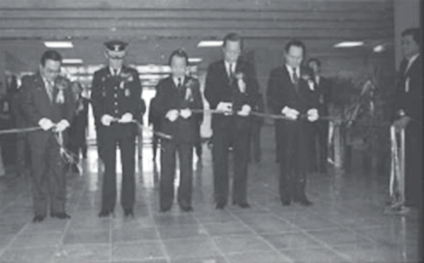 September 1, 1986. Foundation Ceremony
September 1, 1986. Foundation Ceremony
On September 1, 1986, our institute was relocated from the Uijuro building to a new building set up in Sinwol-dong, Yangcheon-gu, Seoul. This was because the old Uijuro building was uncomfortable in many ways including traffic congestion as it was located in the center of the city, making it inconvenient to deal with dead bodies.
During this period, a long-term plan for developing new analysis techniques was established and the quality of analysis technique research development was sought through training for advanced foreign analysis techniques. The mutual exchange system of the latest analysis techniques was established by holding various report meeting regularly, expanding academic exchanges with academic societies, and encouraging the practical analysis participation consultation of analysis advisory board.
Since 1980, methamphetamine (pilophon) abuse has increased. Before 1985, most of the substance types requested were powdered methamphetamine. Analysis on methamphetamine contained in urine was performed using EMIT, an immunological analysis method, from 1985 when the analysis method was first established.
In 1985, the institute developed 20 new analysis techniques, including research on PGM enzyme type detection in bloodstains, personal identification by hair, etc. The institute also purchased an automatic leaching machine, disk electrophoresis device for protein and enzyme analysis, comparative stereoscopic microscope for stereoscopic comparison of documents and handwriting, and flash point tester for analysis of unregulated oil.
In 1987, the institute was better able to assist in primary investigations for crimes by promoting specialized tasks. For example, the blood type was analyzed by a dissociation test for bloodstains, etc. attached to clothes, etc., and, at the same time, for trace bloodstains or those not noticeable, the institute introduced a luminol test to apply it to investigations for violent cases. Moreover, a voice analysis technique was introduced on July 1,as the development of the media increased interest in voice. The analysis field has been subdivided for environmental substances requiring expertise such as alcohol including blood alcohol, harmful gases such as carbon monoxide, hazardous chemicals such as prussic acid, firearms, explosives, etc.
As society became modernized and stabilized in the 1990s, analysis on firebombs, tear gas, and blood carbon monoxide suddenly decreased. Instead, analysis on flammable substances in textiles and fire residues with continuous introduction of microanalysis equipment and analysis on blood alcohol concentration with rapidly increased supply of vehicles sharply increased. In addition, as coal used as fuel was replaced by oil, gas and electric fuels, analysis on whether a victim suffered from carbon monoxide poisoning while sleeping evolved as a means of determining the time of a person's death from a fire.
In August 1991, a personal identification method using genetic analysis was introduced in criminal cases for the first time in South Korea. In March 1992, DNA type analysis was applied as actual criminal evidence. The DNA analysis field for personal identification in the area of criminal investigations has made remarkable progress globally.
In 1990, a method to detect marijuana components in urine was established. In 1991, as TDx, a preliminary experimental device using fluorescence polarization immunoassay, which is more advanced than EMIT, was introduced, an analysis service for detecting marijuana components in urine was started. To date, the majority of narcotics analyses in urine is performed by preliminary experiments using TDx and main experiments using GC/MS. These techniques are also used for the detection of narcotics such as amphetamines, opiates, benzodiazepine tranquilizers, barbiturates sleeping pills, etc.
Our institute has established an objective evaluation method of analysis results by standardizing analysis techniques through the establishment of the analysis reliability certification project (KOLAS) while enhancing the scientific investigation ability based on modernized high-tech equipment. Moreover, independent and impartial analysis results have been obtained according to the transparency of the process of our analysis service.
In 1995, our institute recorded 69,133 cases of analysis, showing a 10.6% increase from the previous year. Additionally, high-precision mass spectrometry, scanning electron microscopy, DNA analysis equipment, etc. were introduced, in order to enhance the scientific investigation competency according to the modernization of high-tech equipment, strengthen equipment selection for analysis management, and secure enough equipment for traffic accident analysis.
In 1999, to build a computerized management system for analysis services, a local area network (LAN) was installed and LAN server building equipment was purchased to build an Internet web server. In addition, according to the modernization promotion plan of analysis equipment, the institute purchased anaerobic microbiological analysis equipment, autopsy equipment for an aseptic autopsy room, preliminary experiment device for detection of narcotics in hair, and automatic DNA sequence analyzer, etc. at a cost of 1,683 million KRW. In collaboration with the United Nations Drug Control Programme (UNDCP), the institute has tracked drug manufacturers by analyzing impurities that contain methamphetamine and enhanced the criminal arrest rate by building a DNA analysis system and a search system to maximize individual identification. Meanwhile, the institute signed a joint research agreement with KIST to develop new analysis techniques such as a hit-and-run vehicle tracking system and an alcohol detector using alcohol dehydrogenase (ADH) and near infrared rays.
Forensic hypnosis, officially used for investigations since 1999, has been steadily increasing achievements each year, and in 2003, it increased by about 147% compared to 1999. Recently, in the new media digital video age, computer-related and image processing tasks contribute greatly in solving cases, and the importance of the work is increasing day by day. Also, since the late 1990s, CCTV-related analysis tasks in the field of video have been evolving.
As society changed, the examination requirements for the fire sector changed from the cause of ignition in the early period, the ignition source in the middle period, to the analysis on the cause of ignition through the field inspection in the 1990s. In the 2000s, with the introduction of PL method, comprehensive analysis including specific cause of ignitions and interpretation of the cause of damage is being required.
In 2000, the central branch office was opened, while the laboratory information management system (LIMS) was established through computerization of analysis tasks. In 2001, to improve analysis conditions, the institute increased the number of analysis specialists and developed analysis techniques such as the traffic accident vehicle trace tracking program and CCTV replay imaging system.
In 2002, the institute established the DNA search system and developed a toluene (toxic chemical) diagnostic kit and a search system for traffic accident hit-and-run tracking.
In 2003, as part of the improvement of the operating system for the efficiency of analysis promotion, the operation system of the autopsy examination support function was united, and a toxic substance evaluation system and an advanced DNA analysis system were introduced. The institute conducts precise biopsy through transmission electron microscopy that was introduced at that time, thereby increasing the reliability of pathologic analysis. Additionally, by pursuing the Korea Laboratory Accreditation Scheme (KOLAS), it established an objective evaluation method of analysis results by standardizing analysis techniques and obtained independent and fair analysis results based on the transparency of the process.
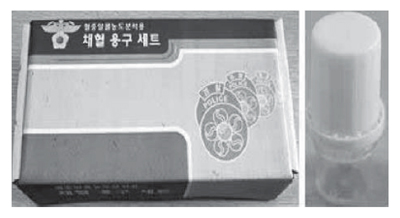 Blood Alcohol Concentration Analysis Kit
Blood Alcohol Concentration Analysis Kit
Meanwhile, in 2003, blood alcohol concentration analysis entered a new era.
For decades, blood alcohol concentrations were measured using commercially available blood sampling containers, but as these blood sampling
containers were made for clinical trials in hospitals, no measures were taken against blood decomposition or container damage during transport.
As a result, more than 10 cases were reported in which blood containers were damaged in the process of being transported from the police office
to the laboratory after the blood collection, thus making analysis impossible. However, in late 2003, the institute commissioned the National
Police Agency to produce blood sampling containers for blood alcohol concentration analysis, and since 2004, it has been using the same type
of container. EDTA, which is an anticoagulant, and NaF, which is an anti-decay agent, are added to this container, and it can be wrapped twice
to prevent breakage. From 2004, there was no cases where blood alcohol concentration analysis was impossible due to breakage of the blood
sampling container or decomposition.
Another accomplishment was the start of analysis on writing instruments. If the same person forged a document with the same handwriting, it was difficult to judge the authenticity of the document. However, since 2000, the institute started to develop how to determine the writing time of a writing instrument, and its effort bore fruit in late 2003. From the start of the analysis in 2004, analysis requests flooded in from the police, prosecutors, courts, etc.
Based on our experience and know-how accumulated over the past half century, our institute has continued to work on the development of practical analysis techniques required in the field. As a result, we have acquired world-class technology in various analysis fields.
The analysis demand, which had increased since the 2000s, began to explode in 2008. In 2007, it increased by 14% from the previous year and by nearly 100,000 cases in six years in 2014. In particular, the number of requests for DNA analysis examination processing is increasing by so much that it accounts for more than half of the total number of examination processing in 2014. This is due to the explosive increase in demand by the enforcement of the 「Act on Protection and Support of Missing Children, etc. 」 in 2005 and the 「Act on the Use and Protection of DNA Identification Information」 in 2010. Reflecting this trend, the institute introduced a real-time PCR machine in 2006 and MiSeq of Illumina (NGS: Next Generation Sequencing) equipment in 2014, which is being used for advanced DNA analysis.
Analysis Field
In 2009, liquid chromatography/mass spectrometry (LC/MS/MS) was applied to analysis tasks, enabling analysis of most organic chemicals, resulting in improved analysis credibility and expanded analysis domain. In 2010, the institute developed an automatic poison detection program to help solve toxic poisoning incidents. In 2013, the institute developed an analytical technique for male hormone to perform drug testing for sexual offenders who have been subjected to chemical castration. In 2014, a method of analysis for GHB in hair, which is used for abuse and rape, has been established.
Analysis Field
In 2010, the institute carried out analysis on elemental compositions and content for fine metals and minerals using a micro-XRF spectrometer (μ-XRF). For the coidentity of paint, fibers and color inks, a microscope spectrophotometer (MSP) has been used for analysis. In addition, for coidentity of crystalline minerals and the soil, X-ray diffractometer (XRD) is used to perform cross-tabulation. In 2014, Raman spectroscopy (Raman) and stable isotope ratio/mass spectrometry (IR/MS) were introduced to determine the coidentity of various minerals and organic materials and to track ink and hair.
The rapidly changing digital analysis field is making efforts for research method development and technology transfer in order to actively cope with various incidents and accidents due to the emergence of new digital devices and the development of anti-forensic technology. The NFS has developed our own forensic image analysis program and supplied it for police, military, and other investigative agencies. It has improved digital forensic technology by transferring frame-based video restoration techniques, and saved billions from the national budget.
In addition, the number of cases of urgent requests for analysis of CCTV images for primary response to crimes is rapidly increasing, but considering the fact that it is difficult to provide rapid analysis support due to the separation of the physical space of crime scenes and analysis sites, we aim to establish a crime response system by expanding remote analysis support by building a U-forensic lab in the police offices of 1st class locations nationwide.
Analysis Field
In order to increase the reliability of traffic accident interpretation, the NFS has developed an accident reconstruction program (NISI-TAR) and distributed this program to the police and investigative agencies. We improved the reliability of analysis by using advanced equipment such as traffic accident reconstruction programs using 3D images, including EDVAP, PC-CRASH, PC-RECT, Photomodeler and MADYMO. In addition, the NFS developed analysis techniques by building a network with the National Police Agency and using state-of-the-art equipment MADYMO simulation and motion capture to pursue scientific and objective analysis.
Forensic Field
The NFS developed pupil-based polygraph detection equipment and a lie detection chair and completed patent registration, while developing a desk for psychophysiology testing and completing utility model registration for design. Korean type test method has been developed and used for the current analysis.
Autopsy Field
By the introduction of Multi Detector Computed Tomography (MDCT) in 2013, it is now possible to identify critical injury related to the cause of death of a dead person and lesions at the pre-autopsy stage and to suggest findings that can assist with the autopsy results. In addition to injuries including skeletal fractures in tissues, it is useful to identify gas and liquid components in cartilage tissue. In addition, the 365-day forensic autopsy enabled the NFS to carry out autopsies for death cases occurring on weekends and holidays, which was impossible before due to the lack of manpower. It alleviated the inconvenience to family members due to the delay in the funeral process and supported rapid investigations. In order to solve the problem of reliability of analysis that has been raised since autopsies had been performed by general practitioners rather than forensic specialists, a designated forensic officer has been dispatched for autopsies to some parts of Seoul from 2015. To establish a system of patient-satisfaction-based and crime-scene autopsy, it will be expanded nationwide in the future and there is a plan to have the NFS take full charge of field autopsies.
